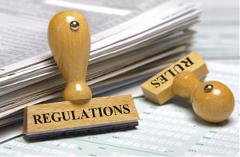Update on Pennsylvania 1099-Misc Withholding for Nonresidents
New Pennsylvania 1099 nonresident withholding rules went into effect Jan. 1, 2018, with penalties for noncompliance beginning July 1, 2018. New forms and information became available as the deadline neared.
 By Nancy G. Montanye, CPA
By Nancy G. Montanye, CPA
 New Pennsylvania 1099 nonresident withholding rules went into effect Jan. 1, 2018, with penalties for noncompliance beginning July 1, 2018. New forms and information became available as the July deadline neared.
New Pennsylvania 1099 nonresident withholding rules went into effect Jan. 1, 2018, with penalties for noncompliance beginning July 1, 2018. New forms and information became available as the July deadline neared.
This is an update to a blog posted in February. Please refer to it, knowing that the basics remain the same, with further clarification since.
 In June, the Pennsylvania Department of Revenue (DOR) issued additional guidance on this topic. The Nonresident Withholding section contains multiple links that address the general rules, what the law requires, Pennsylvania source income, frequently asked questions, and more. The page also includes new Form REV-1832, 1099 MISC Withholding Exemption Certificate, for determining residency status and the need for withholding.
In June, the Pennsylvania Department of Revenue (DOR) issued additional guidance on this topic. The Nonresident Withholding section contains multiple links that address the general rules, what the law requires, Pennsylvania source income, frequently asked questions, and more. The page also includes new Form REV-1832, 1099 MISC Withholding Exemption Certificate, for determining residency status and the need for withholding.
Pennsylvania income and withholding is reported on Form 1099-MISC boxes 16 through 18. Allocation of other states’ income and withholding is located here as well. Compliance with Act 85 of 2012, requiring submission of certain 1099-MISC to the DOR, has been expanded. A trade or business paying either nonemployee compensation for Pennsylvania-based work or Pennsylvania-source lease payments (including rents, royalties, bonus payments, damage rent, and other lease-related payments) are required to submit copies of federal Form 1099-MISC to the DOR by Jan. 31 of the following year. Attach Rev-1667, Annual Withholding Reconciliation, if there is any tax withholding.
Although many questions have been addressed in the recent release, other clarification issues have arisen. Answers will be forthcoming as implementation takes effect. I have received questions in my accounting and tax practice regarding whether the withholding should be on the gross amount or on the actual amount paid. Here are two examples:
- Royalty payments - The gross amount is reported to the IRS in box 2. Royalty deductions and depletion are then reported on the taxpayer’s Schedule E. Royalty payments received are the net amount after royalty deductions.
- Nonemployee compensation, where expenses are paid by the payor and are included in Box 7, and then deducted on the taxpayer’s Schedule C - The subcontractor receives the agreed-upon fee, not including expenses.
Logically, it seems that the tax withheld should be on the net income paid, since that would more accurately reflect the amount of income tax due from nonresidents, thereby reducing over-withholding and unnecessary refunds. However, my search revealed that this is not clear in the released materials. One statement specifically addresses this question. A sentence in a FAQ regarding 1099-MISC catch-up payments states: “The department is not expecting the payor to withhold/remit tax on a payment that is greater than the payment to the payee.” My understanding of this statement is that the tax withheld may be calculated on the net amount paid (currently 3.07 percent). Box 18 (state income) would then be less than IRS income.
The taxpayer would report the Pennsylvania income on the Pennsylvania tax return, being sure not to duplicate any deductions used to arrive at the income amount. In addition, any 1099-MISC showing Pennsylvania tax withheld must be attached to the Pennsylvania tax return or sent by fax or email using cover sheet DEX-93.
Hopefully, further clarification will be forthcoming. The burden can be reduced and compliance enhanced if the rules are made as clear and straightforward as possible. But, as with any new law, it takes time to work out the details for implementation. If you are confused about how to handle your specific situation, please consult with a Pennsylvania CPA.
Nancy G. Montanye, CPA, is a sole practitioner in Williamsport, Pa. She is a PICPA member and serves on the CPA Image Enhancement Committee.
PICPA Staff Contributors
Disclaimer
Statements of fact and opinion are the authors’ responsibility alone and do not imply an opinion on the part of PICPA officers or members. The information contained in herein does not constitute accounting, legal, or professional advice. For professional advice, please engage or consult a qualified professional.






